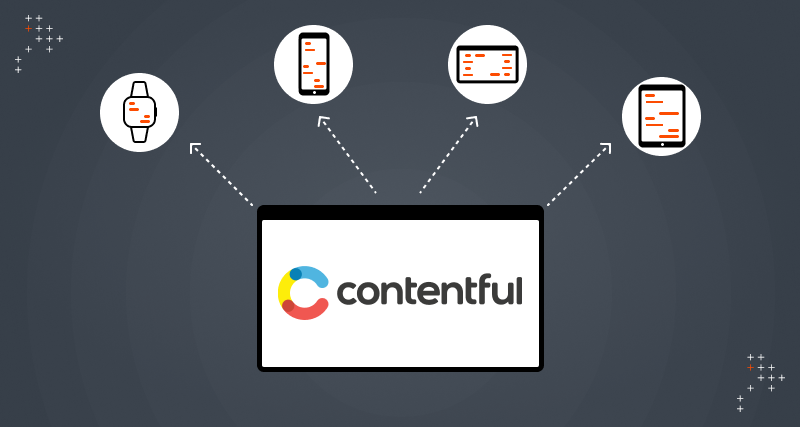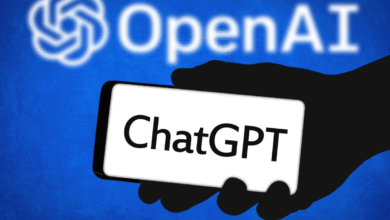Contentful: The Modern Way to Manage and Deliver Content

Discover the power of Contentful, a modern headless CMS designed for fast, flexible content management and omnichannel delivery. Learn how to use and optimize Contentful like an expert.
Contentful has emerged as a modern content platform that revolutionizes the way teams manage, collaborate, and deliver digital content across different platforms. Unlike traditional content management systems (CMS), Contentful offers a headless approach that separates the content creation process from the presentation layer. This makes it incredibly flexible, developer-friendly, and perfect for businesses looking to scale and future-proof their digital content infrastructure.
In this article, we’ll explore Contentful from various angles—what it is, how it works, why it matters, and how you can make the most out of it. Whether you’re a content manager, developer, marketer, or digital strategist, this deep dive into Contentful will give you a well-rounded understanding of the platform.
What is Contentful?
Contentful is a cloud-based headless content management system that allows developers and content creators to manage content in a centralized hub and distribute it across multiple channels, including websites, mobile apps, and IoT devices. Unlike traditional CMS platforms that tightly couple content with presentation, Contentful keeps them separate, offering greater flexibility and control.
At its core, Contentful provides APIs that make it easier for developers to retrieve and display content in any frontend framework or platform. This decoupling empowers teams to work more efficiently and scale without being held back by monolithic systems.
Because of this headless architecture, developers can use Contentful with React, Vue, Angular, or any frontend technology. On the other hand, content creators can continue working in an intuitive web-based UI, creating and updating content without touching the code.
Why Choose Contentful Over Traditional CMS?
Contentful isn’t just another CMS. It’s designed to be part of a modern tech stack, supporting omnichannel delivery and providing a modular approach to content architecture. So why would someone choose Contentful over a traditional CMS like WordPress or Drupal?
One of the primary reasons is flexibility. With traditional CMS platforms, you often get locked into a specific way of doing things. The templates, themes, and plugins might be great for smaller projects but become limiting when you’re building enterprise-level digital experiences. Contentful allows you to build your frontend without any constraints from the backend.
Another big advantage is speed and scalability. Traditional CMSs can become bloated and slow as more plugins and content are added. Contentful, being API-first, ensures fast performance and scalability from day one. The content is delivered through a CDN, making it highly available and responsive for users worldwide.
The Core Features of Contentful
Contentful comes packed with features that make it ideal for teams of all sizes and technical backgrounds. Let’s break down some of the most significant features that make this platform stand out.
First, there’s the Content Model, which lets you define content types like articles, blogs, authors, and products. You have complete control over the structure, which means you can define fields, relationships, validations, and more—all tailored to your needs.
Then there’s the Media Library. Contentful makes it easy to upload and manage digital assets like images, videos, PDFs, and more. These can be reused across different entries and localized as needed.
Localization is another powerful feature. If you operate in multiple markets, Contentful supports content localization out of the box. You can create and manage translations for any content type, which is crucial for global brands.
Finally, Roles and Permissions allow granular control over who can do what. Whether you’re working with a large team or collaborating with external contributors, you can assign specific roles and define custom permissions.
How Developers Use Contentful

For developers, Contentful is a dream come true. It provides a robust RESTful API and GraphQL API that allows for fetching content in any format you need. The APIs are well-documented, fast, and reliable.
One common use case is integrating Contentful with popular frontend frameworks like React or Next.js. Developers can easily query the API to retrieve content and render it dynamically, making for fast and interactive user experiences. Plus, with SDKs for JavaScript, PHP, Ruby, and even mobile platforms like Android and iOS, the integration possibilities are vast.
Contentful also supports webhooks, which means developers can set up automated workflows. For example, when content is updated, a webhook can trigger a build process in a CI/CD pipeline, ensuring the changes go live without manual intervention.
With its support for preview environments, developers can also create staging environments where content editors can review changes before they go live. This ensures quality and accuracy in content delivery.
How Content Creators Benefit from Contentful
It’s not just developers who benefit from Contentful. Content creators and editors enjoy a clean, user-friendly interface designed to simplify their workflow. With a rich text editor, media embedding, and drag-and-drop features, managing content becomes less technical and more intuitive.
One of the best features for content teams is the entry referencing. This allows you to link different pieces of content together. For instance, you can reference an author profile within a blog post or link a product page within a review. This ensures consistency and minimizes duplication.
Content scheduling is another essential feature. Teams can draft content ahead of time and schedule it to go live at a specific date and time. This is especially useful for marketing campaigns, seasonal offers, or product launches.
And let’s not forget collaboration. Multiple users can work on the same content simultaneously. With version control and activity logs, it’s easy to track changes and revert to previous versions if needed.
Contentful for Enterprise
Enterprise organizations have unique needs, and Contentful is built to meet them. From scalability and performance to security and compliance, it ticks all the boxes.
Enterprises often operate in highly regulated environments. Contentful supports industry standards like GDPR, ISO certifications, and offers enterprise-grade SLAs. With options for single sign-on (SSO), custom roles, and audit logs, organizations can maintain strict governance and control.
Another big selling point is integration. Contentful can seamlessly integrate with tools like Salesforce, Shopify, and Marketo. Using APIs and middleware like Zapier or custom microservices, businesses can create automated, personalized experiences for users.
The modular content architecture also means that enterprises can break down content into reusable components, making global updates easier and faster. This is especially useful for managing multi-site, multi-language ecosystems.
Headless CMS vs Traditional CMS
Let’s take a moment to understand the key differences between a headless CMS like Contentful and a traditional CMS like WordPress.
In a traditional CMS, the backend (where content is created) and the frontend (where content is displayed) are tightly coupled. This can limit flexibility and make it harder to deliver content across different channels.
With a headless CMS, the backend is completely decoupled from the frontend. Content is created and stored in the backend, then delivered via API to any frontend platform. This allows developers to build custom frontends for websites, apps, digital displays, and more.
The benefits? Faster load times, better scalability, and the freedom to innovate without limitations. Contentful represents this new generation of CMS platforms that focus on agility, performance, and omnichannel delivery.
Getting Started with Contentful
Getting started with Contentful is fairly straightforward. You can sign up for a free account and create your first space, which acts as a container for your content. Within this space, you define content models, add content, and invite team members.
You’ll then use the API keys to connect your app or website with Contentful. Whether you’re using React, Vue, or even plain HTML, Contentful provides SDKs and tools to help you integrate quickly.
Don’t forget to explore the Contentful Marketplace, where you can find integrations and apps to extend your workspace. From SEO tools to localization plugins, there’s a wide range of options to customize your environment.
Contentful Use Cases
The versatility of Contentful means it can be used in a variety of scenarios. Let’s look at a few real-world use cases.
Ecommerce: Brands can manage product information, promotional content, and customer stories all in one place. Contentful makes it easy to push updates across web, mobile, and social platforms.
Media and Publishing: Journalists and editors can publish stories faster with a streamlined content workflow. With features like scheduling, preview, and versioning, it becomes easier to manage a content-heavy operation.
Corporate Websites: Businesses can centralize all their marketing content, brand guidelines, and media assets in Contentful. This makes global updates a breeze.
Mobile Apps: Developers can use Contentful to power app content without needing to rebuild or redeploy. This makes app updates faster and more efficient.
Tips for Optimizing Your Contentful Workflow

To get the most out of Contentful, it’s essential to follow best practices. Here are some tips to help streamline your workflow.
Start by designing a scalable content model. Think of your content as components that can be reused and repurposed. Avoid hardcoding values and keep the structure modular.
Use tags and metadata to organize your content. This makes it easier to search, filter, and manage large volumes of content.
Set up webhooks to automate repetitive tasks. For example, notify team members when content is published or trigger builds for static site generators like Gatsby.
Train your team on role-based permissions. Not everyone needs access to everything, so define roles that align with responsibilities.
Finally, make use of localization features if you’re operating in multiple regions. Don’t just translate the content—adapt it to each market
FAQs About Contentful
What is Contentful used for?
Contentful is used to manage and deliver digital content across websites, apps, and other platforms. It’s a headless CMS that separates content from design for more flexibility.
Is Contentful free to use?
Contentful offers a free tier with limited features suitable for small projects or learning. Paid plans provide more users, API calls, and enterprise-grade capabilities.
How does Contentful compare to WordPress?
Unlike WordPress, Contentful is headless, which means it delivers content via APIs and doesn’t dictate how it’s displayed. This allows for more flexibility and scalability.
Is Contentful good for SEO?
Yes, Contentful can be excellent for SEO when paired with a frontend optimized for search engines. You have full control over meta tags, URLs, and structured data.
Can non-developers use Contentful?
Absolutely. Contentful provides a user-friendly interface for content creators, marketers, and editors. No coding is required for most content tasks.
Does Contentful support localization?
Yes, Contentful has built-in localization features that allow you to manage content in multiple languages and adapt it to regional audiences.
What programming languages work with Contentful?
Contentful offers SDKs and support for JavaScript, PHP, Ruby, Python, Java, Swift, Kotlin, and more. You can also access content via REST or GraphQL APIs.
How secure is Contentful?
Contentful is highly secure, offering features like two-factor authentication, role-based access, and compliance with global standards like GDPR.
Fazit: Warum Contentful die Zukunft des digitalen Content-Managements ist
Contentful hat sich als leistungsstarkes, flexibles und entwicklerfreundliches Tool etabliert, das traditionelle CMS-Lösungen in den Schatten stellt. Die Trennung von Content und Präsentation bietet maximale Freiheit bei der Gestaltung digitaler Erlebnisse. Ob Start-up oder Enterprise: Wer zukunftssicher aufgestellt sein möchte, kommt an Contentful kaum vorbei.
Von der einfachen Integration bis zur Skalierung in globalen Teams – Contentful ist nicht nur ein CMS, sondern ein zentrales Element moderner Content-Strategien. Wenn du deinen Content auf ein neues Level heben willst, ist Contentful die richtige Wahl.





